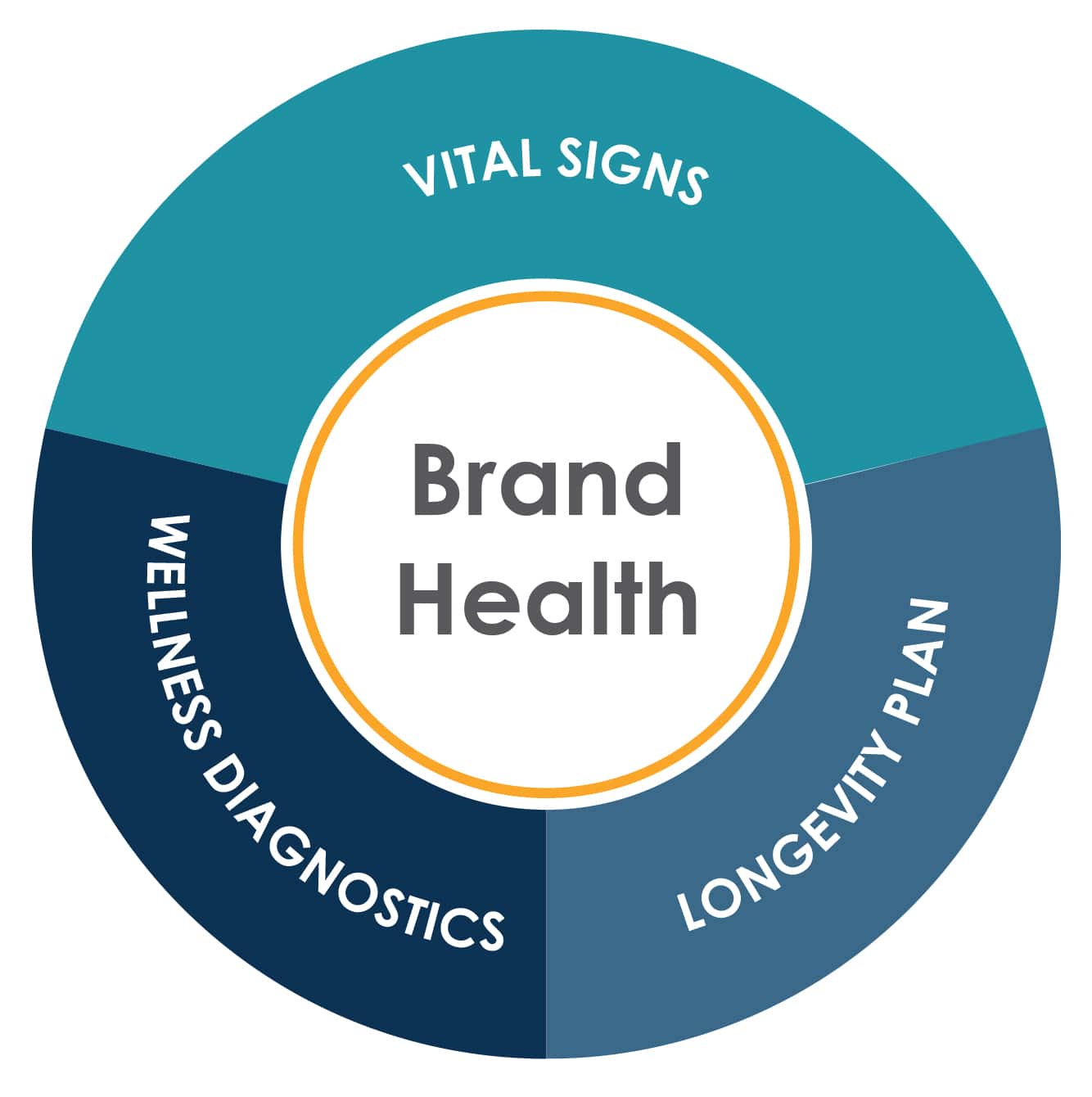Need a Brand Health Check-Up? A Comprehensive Guide

Nature vs. Nurture. When an entity is entrusted to your care, you can let nature take its course and see what happens, or you can intervene to try to optimize results. When it comes to brands, the “nurture” approach is, without question, the way to go. A brand is so much more than a name or a logo. Brands constantly evolve and your audience is critical in determining that evolutionary path. That’s just what happens to brands by their nature. Now to the nurturing. Think of your brand health as a type of living entity that needs to be cared for to thrive in all the ways your consumers think about it, talk about it, and believe in it.
“Nature is a definite thing. But nurture is just as powerful.”
~Henry Cavill
To steer a brand toward continued growth, it involves much more than just simply keeping a finger on the pulse of your brand. There’s no single magic pill or elixir that heals or promotes brand health. But there are a series of indicators that we’ve identified that can be monitored to stay on top of brand health in a multi-pronged and holistic way.
We believe in an approach focusing on these three key areas.

Vital
Signs
The fundamental signs of brand health help you chart your brand’s growth. They point out where strategic attention should be focused to keep your brand moving forward.
Wellness
Diagnostics
Assessing brand wellness, through a series of diagnostics, can reveal underlying factors that may be slowing down or preventing future growth.
Longevity
Plan
Brands need to develop agility and build resilience so that they can respond quickly to shifting market dynamics including competitive activity, rapid innovation, and other industry trends.
1. Vital Signs for Brand Health
Here we look at two areas – external vital signs and internal vital signs. A collection of external and internal quantifiable metrics evaluated together, gives you a fundamental assessment of the current state of your brand health and an indication of the direction it’s taking.

Check these external vitals:
- Brand awareness and familiarity
- Ad awareness and recall
- Consideration and purchase
- Loyalty and advocacy/NPS
- Brand perceptions and associations
- Brand reputation
- Perceptions of brand purpose and promise
Next check these internal vital signs:
- Sales
- Revenue
- Profit
- Customer lifetime value
- Market share
It’s essential to view these metrics together across the same timeframe to reveal a meaningful brand story over time. This way, you can pinpoint trends and see potential relationships between some of the findings. What you learn from monitoring these vital signs can be used to drive growth and set strategic goals.
2. Wellness Diagnotics
This area gets to the root causes contributing to (or detracting from) brand well-being. Here we look at brand relationships across your entire audience, including customers, non-customers, employees, and other key stakeholders.

Key wellness diagnostics include:
- Customer satisfaction (overall and with products, services, purchase process, usage)
- Marketing communications and advertising effectiveness
- Customer journey moments
- Transactional experiences
- Win/Loss
- Employee experience
Listening to your target audience’s brand stories and probing into their deep-seated beliefs can help paint a clearer picture of the “why” factors impacting changes in brand health and wellness over time This is powerful because it informs an understanding of the emotional connections and relationships being formed between your brand and the people your brand serves (especially employees and customers.)
3. Longevity Plan
This is where healthy brands respond quickly to market dynamics, including competitive activity, rapid innovation, and industry trends – both within and outside of any given business category.

Areas to focus on include:
- Brand trust
- Competitive position
- Industry developments, advancements, innovations
- Adjacent or other industry disruptors
Once you’ve checked in on these three key areas of brand health, what’s next? This may actually be the most critical step – putting what you’ve learned into action. You can think about it like this – when your doctor gives you advice on how to stay healthy, you have to act on it to get results. Otherwise, nothing changes – or worse yet – health deteriorates. The focal point with brand health is getting internal stakeholders to make growth-oriented changes across the organization. This allows you to have everyone working toward a common, sustainable goal. Everyone plays a role. Everyone has a stake in it. After all, building a strong brand may be the biggest single determining factor in an organization’s success over time.
Bonus Content
Once brands have checked in on all these factors impacting brand health, it’s time to zero in on a holistic growth plan. We’ve developed a ‘Brand Maturity Framework’ that can help you determine which brand health metrics require the greatest attention, based on the stage your organization is at.

Obviously, a newly created brand has completely different brand health needs as opposed to an established brand. All the metrics matter. It’s just that some matter more at certain points in the life of a brand than others. This may require some soul searching on the part of brands. Do compromises need to be made to optimize for better brand health? For example, profits might be impacted at the expense of taking action to improve an aspect of the employee experience. Or an investment in company training may be needed, but the payoff for the customers who ultimately benefit may be well worth it to your brand.
So back to Nature vs. Nurture. Your brand is a function of both. Nurturing your brand health is what allows a brand to really shine and differentiate itself – more so than it ever could “naturally.” Nurturing is the difference between brands thriving, as opposed to just surviving.

